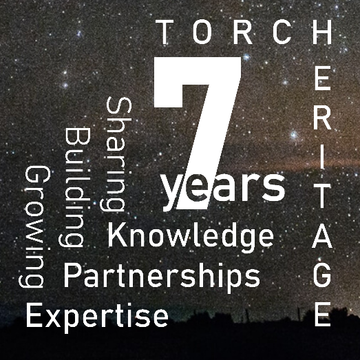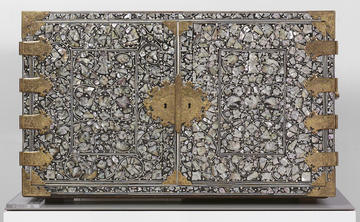Re-evaluating the Neapolitan Collection of Compton Verney
A Summer Research Internship
The Heritage Partnerships Team and the Oxford University Heritage Network (OUHN), working closely with the Oxford University Careers Service, set up and funded this four-week summer internship with Compton Verney. This internship was funded through the Higher Education Innovation Fund (HEIF). Since 2014, when we first established this collaboration, Compton Verney has hosted seven interns from the University of Oxford.
Although I am a medievalist and my DPhil research focuses on late fifteenth-century England, I was keen to apply for the placement Compton Verney was offering to re-evaluate their collection of paintings, sculpture and decorative objects from seventeenth- and eighteenth-century Naples. The brief was to use the collections records, high resolution photographs and visits in person where possible, to assess the existing research on the collection and the wider subject, and to suggest further avenues for sharing the collection with a wider public. I was intrigued by their openness to allowing an outsider to review the collection in this way, and felt that I could provide a fresh viewpoint. Before coming to Oxford, I had a twenty-year career at the Victoria and Albert Museum in London, and I was therefore keen to re-enter the museum world, even if only temporarily, to engage with a very different type of independently-run institution, in the middle of the countryside, and to see how they were dealing with the challenges of the pandemic.
The Covid-19 environment is testing for everyone, not least museums who have been forced to close to visitors for months, but it provided opportunities as well as difficulties. The problems were obvious: initially I was not able to access the collection in person, and the closure of the Oxford libraries was a major challenge. But for me, the advantages of the unusual situation outweighed the problems. The placement was offered for remote working, and Compton Verney were happy for me to work flexibly to complete the four weeks over a longer period. As I have school-age children, this was the reason why I was able to apply this year. The other Oxford intern at Compton Verney this summer completed her internship from China! I think the option of flexibility should be taken forward to future internships, where appropriate, to widen the pool of potential applicants.
I began by reviewing all the existing online records for the fifty paintings and objects in the collection, creating new object information documents for each. Incorrect and incomplete information made this a worthwhile exercise, which also familiarised me with the collection.
Using this knowledge, I was then able to consider ways in which the collection could be shared more widely. My main contact, Senior Curator Amy Orrock, had come across the Neapolitan Network, an inter-disciplinary and international network of researchers convened by the University of York, but had not had the chance to find out much about it. I was able to contact the convenor, and open a dialogue with them. The lack of a specialist curator at Compton Verney is a constraint on developing the profile of the Naples collection, so we hope this network might prove useful as a source of future collaborators, both individuals and other institutions.
I am aware that museums are operating in a very uncertain environment at the moment, so I suggested a range of ideas, some of which are relatively economical and could be achieved in the short term, and others which will take more time, and which may require external funding. I was impressed by how Compton Verney, while dealing with the severe shock of a four-month shutdown, and the challenges of ongoing social distancing, is very much looking to the future in terms of its programme.

Cabinet, interior: Naples, c.1600 © Compton Verney, photo by Prudence Cuming Associates Ltd
One of several relatively short-term projects I suggested, ‘Opening Up’, would involve the photography and filming of some of the three-dimensional objects in the collection to show them being handled in the way which they were intended to be and which is not possible in a museum setting, ‘opening them up’ for visitors both literally and figuratively. A cabinet with elaborate mother-of-pearl decoration on the outside is open in the gallery, revealing equally elaborate carved ivory decoration inside, incorporating bible scenes from the Book of Esther. But each drawer and cupboard in this ivory interior also opens up, and the interplay between the exterior and the interior as the main doors are opened would have been an important feature of the experience of the cabinet in its original setting. I proposed incorporating these images and films with the existing object entries on the website, as well as possibly allowing for a QR code in the gallery to link the visitor directly to these pages on their phones, while looking at the cabinet itself. Compton Verney are now also considering scheduling this as a live event, giving visitors the chance to explore these objects in the round in person. I blogged about this proposal on the Compton Verney website.
In the longer term, I have suggested a programme of occasional seminars, in collaboration with external specialists, to explore relevant themes. Topics might include the use of ‘exotic’ materials, particularly coral, relationships with the non-European world, or the role of female patrons and makers in early modern Naples (an area where the collection is currently relatively weak). I also put forward several exhibition ideas, focusing on paintings, particularly on those from UK collections, which are more straightforward to borrow and to display in these uncertain times. Compton Verney is proud of their exhibition programme, which is commercially successful, while based on sound research, and this provides another opportunity for collaboration with external specialists, and potentially contemporary artists.
The loosening of government guidance allowed Compton Verney to open to the public again in July, and I was therefore ultimately able to visit in person, which has been invaluable in terms of seeing the collection, as well as being able to go through the paper records. I have also finally been able to visit libraries in Oxford to check what was a long list of references. But, given the excellent support which Compton Verney provided in terms of suitable technical resources and support, with regular Zoom meetings with Amy and access to wider staff meetings, it certainly would have been possible to complete the internship successfully entirely remotely, which must be a useful lesson for the future.
Eleanor Townsend is a DPhil candidate in History of Art, writing her thesis about the commissioning, reception and afterlife of images in late-medieval parish churches, focusing on a reredos in St Cuthbert’s church, Wells. She tweets @Eleanor25661771.
TORCH Heritage Programme Homepage


Cabinet, exterior: possibly Madrid, 16th century © Compton Verney, photo by Prudence Cuming Associates Ltd


